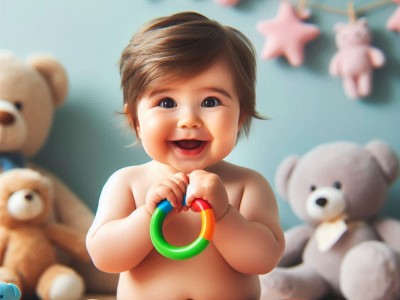1. Understand the Causes
-
Teething: Toddlers may bite to relieve the discomfort of teething.
-
Communication: They might bite because they can't express their feelings or needs verbally.
-
Exploration: Biting can be a way for toddlers to explore their environment.
-
Attention: Sometimes, biting is a way to get attention, even if it's negative.
2. Prevention Strategies
-
Provide Teething Toys: Offer appropriate items for biting, like teething rings.
-
Teach Communication: Encourage toddlers to use words or gestures to express their needs.
-
Supervise Closely: Keep a close eye on toddlers, especially in situations where biting is likely to occur.
-
Model Positive Behavior: Show toddlers how to interact gently with others.
3. Responding to Biting
-
Stay Calm: React calmly and firmly. Avoid yelling or harsh punishment.
-
Address the Victim First: Comfort the child who was bitten before addressing the biter.
-
Explain Consequences: Help the biter understand that biting hurts others.
-
Redirect Attention: Distract the toddler with a different activity or toy.
4. Create a Positive Environment
-
Routine and Structure: Maintain a consistent daily routine to provide a sense of security.
-
Positive Reinforcement: Praise and reward positive behavior.
-
Engage in Active Play: Ensure toddlers have plenty of opportunities for physical activity to release energy.
By understanding the reasons behind biting and implementing these strategies, you can help reduce and eventually eliminate this behaviour.
What Can You Do When A Toddler Bites Another Child
When a toddler bites another child, it's important to handle the situation calmly and effectively. Here are some steps you can take:
1. Stay Calm and Act Quickly
-
Separate the Children: Gently but firmly separate the children to prevent further incidents.
-
Comfort the Victim: Attend to the child who was bitten first. Offer comfort and check for any injuries.
2. Address the Biter
-
Stay Calm: Avoid yelling or showing anger. Speak in a calm and firm voice.
-
Explain the Consequences: Help the biter understand that biting hurts others. Use simple language like, "Biting hurts. We don't bite our friends."
3. Teach Alternative Behaviors
-
Encourage Communication: Teach the toddler to use words or gestures to express their feelings or needs.
-
Provide Teething Toys: If the biting is due to teething, offer appropriate items for biting, like teething rings.
4. Reinforce Positive Behavior
-
Praise Good Behavior: Reinforce positive interactions with praise and rewards.
-
Model Gentle Behavior: Show the toddler how to interact gently with others.
5. Monitor and Prevent
-
Supervise Closely: Keep a close eye on the toddler, especially in situations where biting is likely to occur.
-
Create a Positive Environment: Maintain a consistent routine and provide plenty of opportunities for physical activity to release energy.
By addressing the behavior calmly and teaching alternative ways to express feelings, you can help reduce and eventually eliminate biting incidents.
Gestures/Words Toddlers Can Use To Prevent Biting
Teaching toddlers' alternative ways to express their feelings and needs can help prevent biting. Here are some gestures and words that can be useful:
Gestures
-
Pointing: Encourage toddlers to point at what they want or need.
-
Nodding/Shaking Head: Teach them to nod for "yes" and shake their head for "no."
-
Hugging: Show them how to give a gentle hug when they want to show affection.
-
Hand Signals: Use simple hand signals for common needs, like raising a hand for help or waving for attention.
Words
-
"Help": Teach them to say "help" when they need assistance.
-
"Please" and "Thank You": Encourage polite words to ask for things and show gratitude.
-
"Stop": Use "stop" to express when they don't like something.
-
"More": Teach them to say "more" when they want more of something.
-
"All Done": Use "all done" to indicate they are finished with an activity or meal.
Phrases
-
"I need a break": Help them express when they need some time alone.
-
"I don't like that": Teach them to verbalize their dislikes instead of reacting physically.
-
"Can I play?": Encourage them to ask to join in play rather than taking toys or pushing.
By consistently using and reinforcing these gestures and words, you can help toddlers communicate more effectively and reduce the likelihood of biting.
Here are some additional tips to help prevent biting in toddlers:
1. Teach Empathy
-
Role-Playing: Use dolls or stuffed animals to role-play scenarios where biting might occur. Show how to handle these situations gently.
-
Books and Stories: Read books that teach empathy and discuss the feelings of characters who are hurt or helped by others.
2. Consistent Consequences
-
Immediate Response: Address biting immediately with a calm but firm response.
-
Consistent Rules: Ensure that all caregivers follow the same rules and consequences for biting.
3. Positive Reinforcement
-
Reward Good Behavior: Use stickers, praise, or small rewards to reinforce positive interactions.
-
Behavior Charts: Create a chart to track and reward good behavior over time.
4. Provide Alternatives
-
Chewable Toys: Offer safe, chewable toys for toddlers who are teething or have a strong need to bite.
-
Sensory Activities: Engage toddlers in sensory activities like playdough, water play, or sand play to help them manage their impulses.
5. Monitor Triggers
-
Identify Patterns: Keep a log of when and where biting occurs to identify triggers.
-
Adjust Environment: Modify the environment to reduce stressors or triggers that lead to biting.
6. Teach Self-Regulation
-
Calm-Down Techniques: Teach toddlers simple techniques to calm themselves, such as deep breathing or counting to ten.
-
Quiet Spaces: Create a quiet, safe space where toddlers can go to calm down if they feel overwhelmed.
7. Engage in Cooperative Play
-
Group Activities: Encourage activities that require cooperation and sharing, such as building blocks or group art projects.
-
Supervised Playdates: Arrange playdates with other children to practice social skills in a supervised setting.
By incorporating these strategies, you can help toddlers develop better ways to express their feelings and reduce the likelihood of biting.
How To Teach Toddlers Self Regulation
1. Model Self-Regulation
-
Demonstrate Calmness: Show how to stay calm in stressful situations.
-
Use Self-Talk: Verbally express your thought process when managing emotions, like saying, "I'm feeling frustrated, so I'm going to take a deep breath."
2. Create a Calm Environment
-
Quiet Spaces: Designate a quiet area where toddlers can go to calm down.
-
Soothing Activities: Provide activities like reading, drawing, or listening to soft music to help them relax.
3. Teach Emotional Vocabulary
-
Name Emotions: Help toddlers identify and name their emotions, such as happy, sad, angry, or scared.
-
Use Emotion Charts: Use visual aids like emotion charts to help them recognize and express their feelings.
4. Practice Deep Breathing
-
Breathing Exercises: Teach simple breathing exercises, like taking deep breaths in and out.
-
Blowing Bubbles: Use fun activities like blowing bubbles to practice deep breathing.
5. Encourage Problem-Solving
-
Offer Choices: Give toddlers choices to help them feel in control and practice decision-making.
-
Guide Through Solutions: Help them think through solutions to problems, like sharing toys or taking turns.
6. Use Positive Reinforcement
-
Praise Efforts: Acknowledge and praise their efforts to manage emotions and behaviors.
-
Reward Systems: Implement reward systems like stickers or small treats for demonstrating self-regulation.
7. Set Clear Expectations
-
Consistent Rules: Establish and consistently enforce clear rules and expectations.
-
Explain Consequences: Help toddlers understand the consequences of their actions in a calm and clear manner.
8. Engage in Role-Playing
-
Practice Scenarios: Use role-playing to practice handling different emotions and situations.
-
Use Puppets or Dolls: Engage in pretend play with puppets or dolls to demonstrate appropriate behaviors.
By incorporating these strategies, you can help toddlers develop the skills they need to regulate their emotions and behaviors effectively.
References:
Biting Behavior in Toddlers: Causes, Prevention, and Effective Interventions, Neuro Launch
Why Is My Toddler Biting — and How Can I Stop It, Cleaveland Clinic
Toddler Biting: Finding the Right Response, Zero To Three







 As an Educator in Australia, your pay rate falls under the Children’s Services Award 2010. This award states the minimum amount that an employer can
As an Educator in Australia, your pay rate falls under the Children’s Services Award 2010. This award states the minimum amount that an employer can When working as a qualified Early Childhood Teacher (with a university degree) within a service, your rate of pay will come from the Educational Services
When working as a qualified Early Childhood Teacher (with a university degree) within a service, your rate of pay will come from the Educational Services When working as a Diploma Qualified Educator your pay rate is from the Children's Services Award 2010. This Award states your minimum rate of pay
When working as a Diploma Qualified Educator your pay rate is from the Children's Services Award 2010. This Award states your minimum rate of pay When working as a Cert 3 Qualified Educator, your pay rate is from the Children's Services Award 2010. This Award states your minimum rate of
When working as a Cert 3 Qualified Educator, your pay rate is from the Children's Services Award 2010. This Award states your minimum rate of Educational Leaders play a crucial role in their early childhood service by ensuring that the educational program aligns with best practices and supports the holistic
Educational Leaders play a crucial role in their early childhood service by ensuring that the educational program aligns with best practices and supports the holistic In early childhood education and care, ratios are more than a technicality—they are a frontline safeguard. Every child deserves responsive supervision, emotional connection, and developmental
In early childhood education and care, ratios are more than a technicality—they are a frontline safeguard. Every child deserves responsive supervision, emotional connection, and developmental With the new national child safety reforms kicking in on 1 September 2025, early childhood services like yours have a real opportunity to lead the
With the new national child safety reforms kicking in on 1 September 2025, early childhood services like yours have a real opportunity to lead the Here’s a comprehensive Mobile Phone and Smart Watch Policy tailored for early childhood education and care (ECEC) services in Australia, aligned with the latest 2025
Here’s a comprehensive Mobile Phone and Smart Watch Policy tailored for early childhood education and care (ECEC) services in Australia, aligned with the latest 2025 The Sea of Fish Challenge is a national initiative that invites children, educators, families, and communities to create and display fish artworks as a symbol
The Sea of Fish Challenge is a national initiative that invites children, educators, families, and communities to create and display fish artworks as a symbol Across the early childhood education and care sector, educators are sounding the alarm: current staffing ratios are insufficient to deliver safe, meaningful, and developmentally appropriate
Across the early childhood education and care sector, educators are sounding the alarm: current staffing ratios are insufficient to deliver safe, meaningful, and developmentally appropriate


